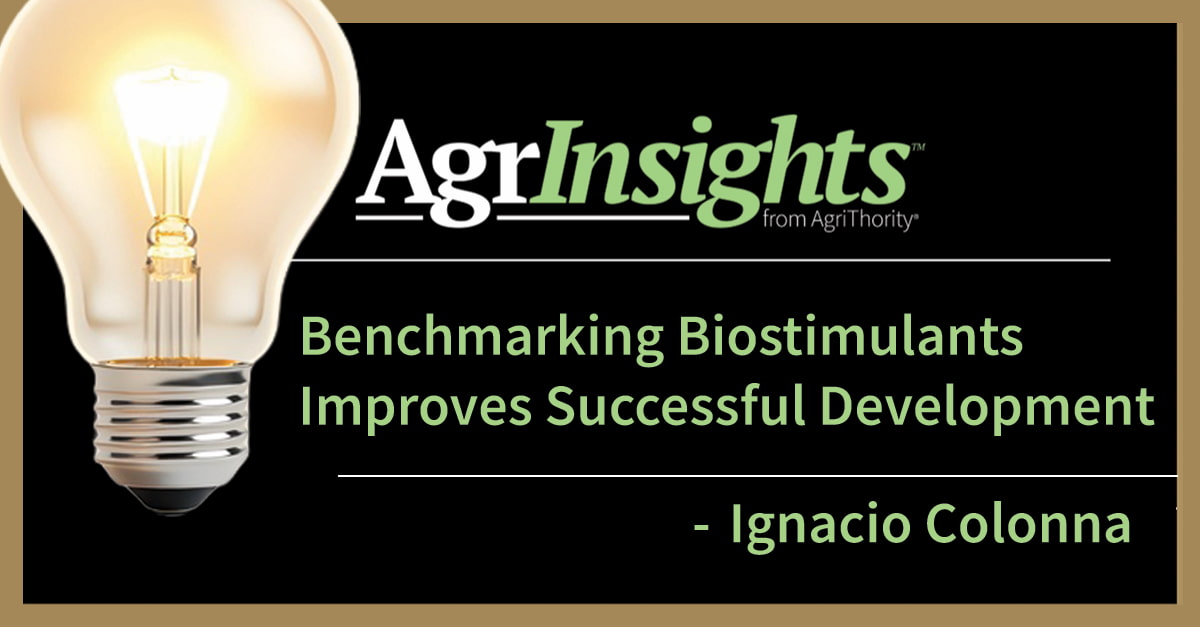As companies move agricultural discoveries through development toward markets, the mission often involves a deep and thorough understanding of the innovation. Ideas can come easily, but to move expeditiously and efficiently through the development process to create a commercially acceptable product involves refining and clarifying a concept to design a meaningful strategic and scientific plan. The early refinement of the innovation concept can be the most challenging step in the development process.
Innovation may be incremental or step-change. Incremental innovation is the development of small, gradual improvements over time. Examples would be a new formulation, adding a new pest or crop use to an existing product or developing a product for a new geographical market. A step-change innovation is something unique, that represents a significant, often sudden shift or transformation in the marketplace. For incremental innovation, development usually follows a pathway defined by previous discoveries. While often more routine, incremental innovation still requires expertise to know that pathway and to interpret the results.
Step-change innovation is unique. There is no template for what information to gather and how to design trials to evaluate it. Likewise, there may be no established benchmark for what is or is not success. This step-change innovation may involve new methods to solve standard problems. At its most challenging it requires new methods to solve previously unknown problems. No template, no roadmap, only original thought and implementation. In some ways developing the unknown. When innovation is needed in designing unique development projects, the AgriThority® diverse skills, both education and hands-on experience, are of greatest value to clients.
Examples
A new market for an old product
A multinational company with a successful product in segments of the building industry had penetrated the largest industrial market for their material, with several lines of products for use in construction. Their R&D capabilities were focused on new uses and refinement of existing uses in the construction industry.
Seeking ways to expand the utility of their successful material into other markets, they approached AgriThority® asking for recommendations for potential uses for their primary product in agriculture; what uses should they explore and how would they evaluate their material for potential value in that market? It was confirmed that the material exhibits super water absorbency. Based on this and other characteristics, a list of potential product concepts in agriculture and respective development steps to pursue each was recommended. Our priority suggestion was to evaluate their product as a water absorption agent for replacement of current materials used for this purpose in agriculture.
Objectives, testing methods, tasks, costs, and requirements were identified for several novel applications of the proprietary material. Potential uses included hydroseeding, use in landscaping to increase survival of new plants and use in planting row crops by increasing moisture retention around newly planted seed. Trials were designed and implemented to provide proof of concept. Their materials were confirmed to perform in water absorbency and retention comparable to current standards.
AgriThority® identified experts and critical requirements for these markets with whom we designed unique protocols and proceeded to field tests. Results confirmed that product characteristics were comparable in many ways with currently used products in some of these markets. The client obtained a trademark for a series of products for use in plant propagation and today has a commercial line focusing on growth media for use in hydroponic and greenhouse production.
Successful Regulatory Challenges
A company in Latin America had a plant nutrient solubilizing biological product that was successfully commercialized in Latin America. AgriThority® was commissioned to develop and register the product in the U.S. We asked USDA about the permit requirements to import research samples, and eventually commercial samples, of this product into the U.S. The initial response from USDA was that one of the microbes in the product was known to be a pesticide, and that we needed to obtain a Pesticide determination letter from EPA that the proposed label did not require FIFRA registration and could be commercialized via state registrations only. Without this, USDA would not grant a commercial import permit for the product. AgriThority® developed the required data, applied for and was granted the required pesticide determination letter stating the product was not subject to regulation under FIFRA.
AgriThority® then obtained state registration in several states and requested a commercial import permit for the product. This time, USDA denied the import permit on grounds that one of the active ingredients in the product was reported in scientific literature to be a plant pathogen.
AgriThority® conducted an in-depth review of the available scientific literature on this microbe. The literature review revealed two major published papers that implicated the microbe in important plant diseases. Discovered were observation of its association with a disease named white blotch on cereal crops in 1982 and numerous publications that implicated it as causing wetwood, a serious disease affecting most forestry tree species. Detailed review of the literature revealed a single detection of the presence of the microbe in samples from a wheat field with symptoms not associated with any commonly observed disease in that geography.
The presence of the microbe in association with the symptoms resulted in the conclusion that the symptoms were induced by a pathogen and this specific microbe was found in all samples where the symptoms were observed; thus, this microbe was likely the pathogen. Similar symptoms were observed in a future year in cereals in Australia and the same pathogen was also isolated from samples of the symptomatic plants. Understandably, it was concluded that the same pathogen was now causing the same disease in another country.
Strangely, in the nearly 40 years since the disease and pathogen association was first hypothesized, no other reports of the disease were found in the literature. Similarly, the disease reported in trees originated from a publication in 1999 in which it was observed that this microbe was one of several bacteria commonly found in wood tissue infected with the serious and commonly occurring condition called wetwood. The microbe had been found in wetwood infected trees as early as 1945. The conclusion was drawn that wetwood is a disease and this microbe was at least one pathogen that is responsible for it.
In subsequent years, it was determined that this serious forestry disease was a response to mechanical damage. The microbes found in wounds were infesting the dead tissue resulting from the wounds, and no evidence exists that the bacteria isolated from the wounds infested living cells. The U.S. Forest Service states in Field Guide to Diseases & Insects of the Rocky Mountain Region:
“Wetwood is not a disease. It results from a physiological process that occurs when the living cells in the wood die. Although it is sometimes called “bacterial” wetwood, this is a misnomer because it is not caused by bacteria.”
In the case of the cereal disease, AgriThority® contacted the extension cereals specialist in the state where it was first identified. This specialist confirmed that no occurrence of white blotch has been observed since the late 70s in extensive disease surveys conducted annually by the extension service. The condition reported as white blotch is likely attributed to abiotic factors (i.e., weather or herbicide drift).
The conclusion of these findings is that the microbe’s association with disease in both trees and cereals is because the microbe is a ubiquitous saprophyte and a common invader of necrotic tissue resulting from abiotic damage to plant tissue. These findings were submitted to USDA, and a commercial import permit was issued for this product. In the U.S., extensive field trials have been conducted, and the liquid formulation of this product has been registered in 13 U.S. states. Registrations of a new WP formulation have been obtained in seven states and are pending in eight states. In Europe, we are currently working on registrations for this product in 18 European countries.
Understand Your Technology
In both examples above, the follow-up development process was routine and well defined. The initial steps required much more in-depth understanding of the technology to be developed than a more routine new formulation of an existing product, a new crop or target pest. Extensive experience and knowledge of a wide range of resources, and how to access them, is essential. Time invested in early definition of technology will improve chances of successful development with the greatest efficiency of time and resources.
The basics to understanding the technology, in the case of the super absorbent material, were the clear definition of the characteristics of the technology and sufficient knowledge of potential markets in which the technology would be of use. In the case of the nutrient solubilizing microbes, a clear definition of the characteristics of the microbes including documentation of their pathogenic potential, or lack thereof, was the key to implementing a successful development program.
A pre-development program to clearly define the new technology will greatly increase the probability of a successful development program that optimizes efficiency of time and resources. AgriThority® can help you define your technology in detail to assure design of a strategic development plan that assures successful development to commercialization and beyond.
When your new novel technology is ready for development, turn to AgriThority® for strategic and scientific expertise. Our global footprint is combined with our deep understanding of agricultural business, regulatory demands, market channels and producer dynamics. We help move your innovation from concept to commercial adoption. Reach out to info@agrithority.com, or call +1 (816) 891-0916 to join forces.



